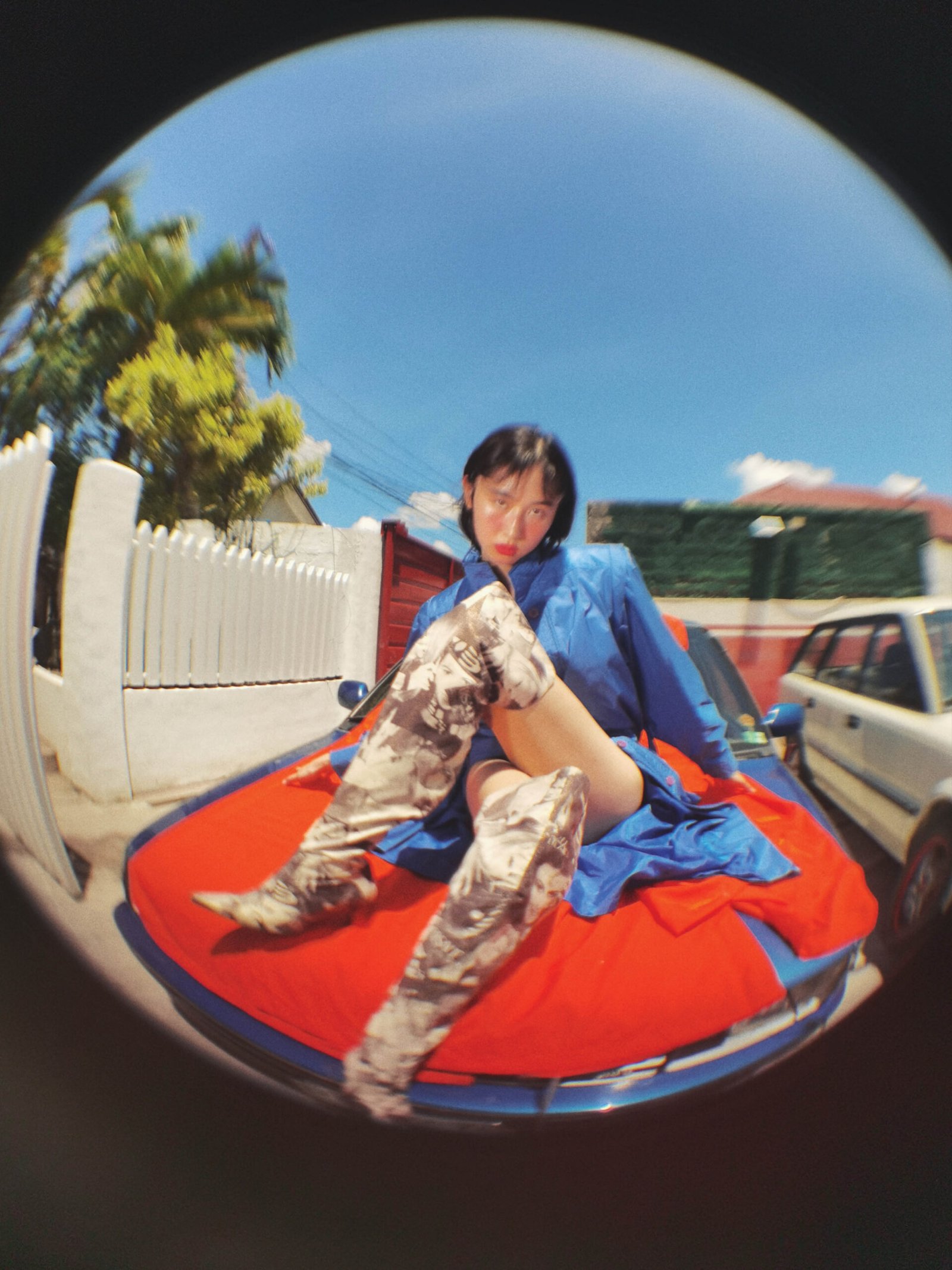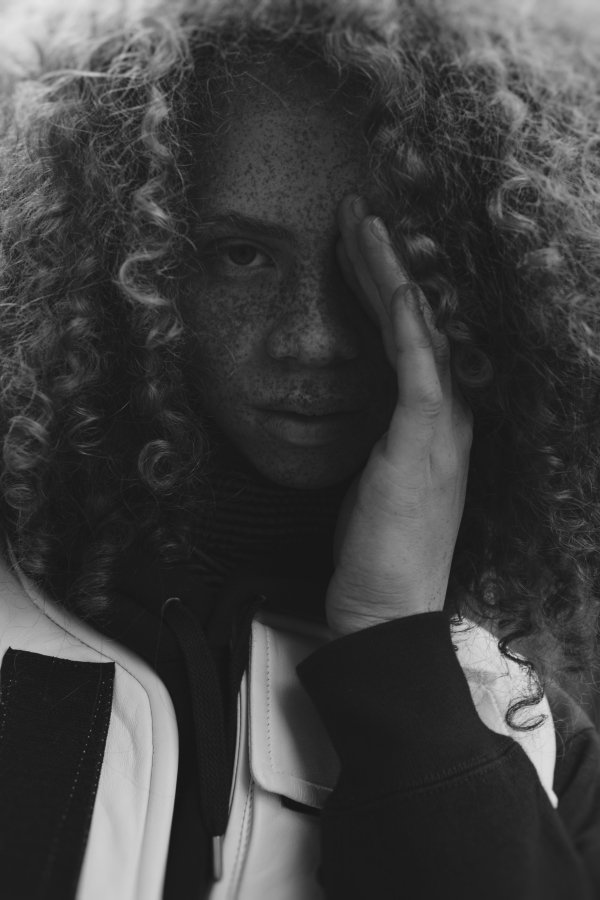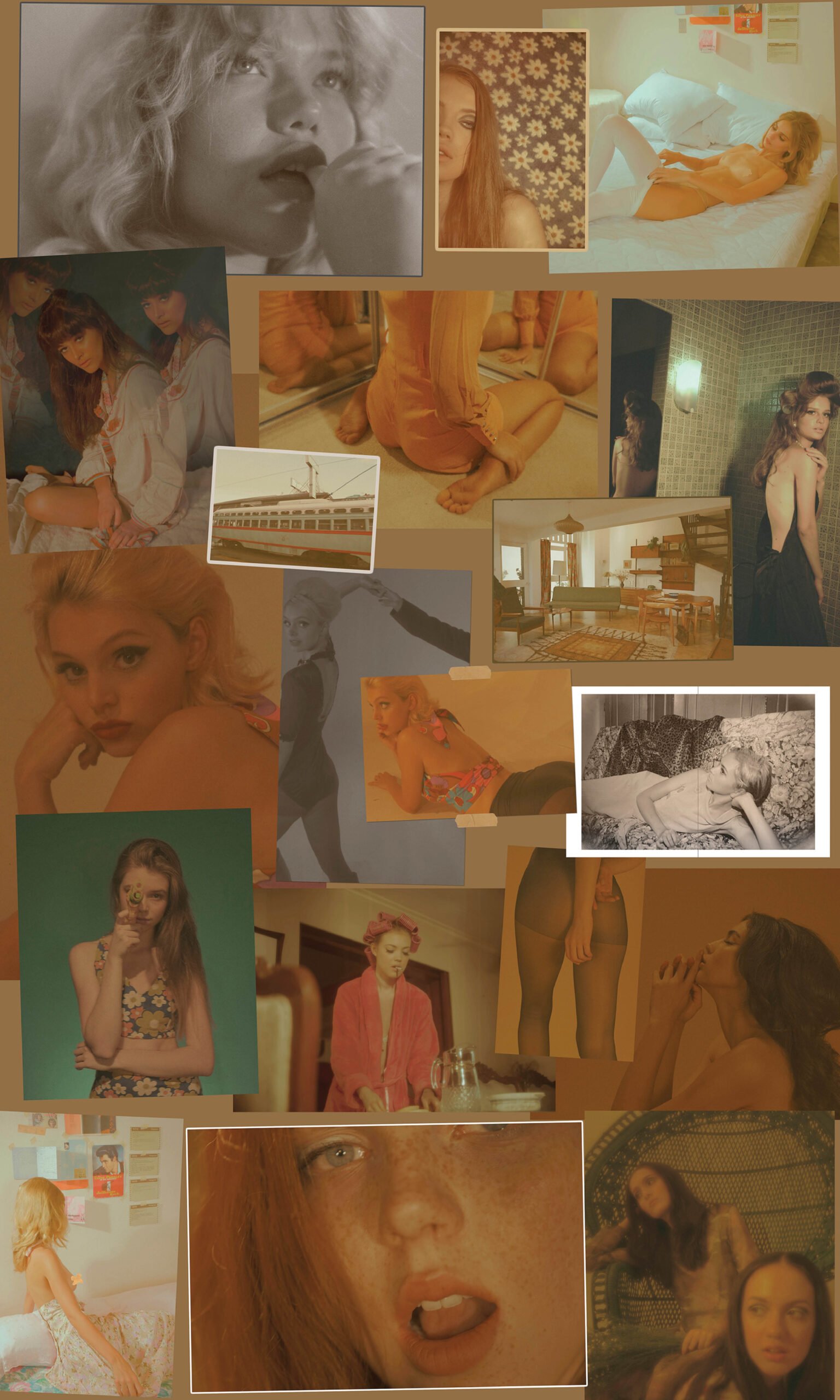Interview Vincent Ong
Portfolio Shaira Luna


Let’s start with your personal experiences and definitions of beauty. Growing up, did you feel beautiful? What influenced your definitions of beauty back then?
Growing up, I feel like beauty was something I never really thought about! My mom was very beautiful and was always described as so, but I didn’t really think about my own appearance. I guess I never felt beautiful, and didn’t feel particularly unattractive, either. I’m certain that my definitions of beauty were partly influenced by my own mother’s looks: she was part Spanish, very fair, with big brown eyes, light hair, and an oval face—a “mix of Audrey Hepburn, Lucy Torres, and Donita Rose,” they would often exclaim! I also read a lot of fairy tales and children’s adventure books, whose stubborn main characters were always bright-eyed and rosy-cheeked.
Your personal aesthetic, fashion- and photography-wise, has often skewed more retro. What initially drew you to these styles? Then eventually, what made you favor them over contemporary aesthetics?
I don’t think I was interested in retro things at all when I first got into photography back in 2003. I just remember doing a 1960s inspired magazine editorial for the first time in 2010, which I thoroughly enjoyed. Having no fashion inclinations or real exposure to fashion shoots prior to entering the industry, it was challenging and it piqued my interest in photography styles from the past. It seems as though photography and fashion came hand in hand – as I studied and researched lighting, I inevitably started noticing the clothes, hairstyles, and makeup that marked each decade.
In 2012, I started producing/shooting stories for fun and often turned to ukay-ukays for the clothes to use for the shoots. It’s something I still do whenever I have a weekend off! Needless to say, my closet is overflowing with costumes and shoot clothes, and the most practical thing to do is to wear them, too! It’s just one of the many, many reasons I favor old/used/vintage things over contemporary aesthetics (we will take all day LOL).
You mentioned in past interviews that you often looked at old images, particularly from the ’60s and ’70s. How do you think they perceived and defined beauty then? How do you compare this with your experiences growing up in the ’90s and as an adult today?
I love looking at old images, particularly from the ‘60s and ‘70s, because it was quite an experimental time when it came to beauty. Coming from simply defining the features in the ‘40s and the ‘50s, the ‘60s and the ‘70s were playful, colorful, and showed that you can make a powerful statement with what you wore on your body and applied on your face. Growing up in the ‘90s, all I knew was that makeup was something you needed to apply to look pretty before going out or going to work because mom would always put some on before heading out the door. She said that she looked scary without makeup since she was so fair, and I find it funny that I actually say the same thing now when I see myself without lipstick!


© Shaira Luna 

© Shaira Luna
How have your definitions of beauty changed—from when you were a child/teen to when you started in the industry to today?
There are some things that I still find beautiful or attractive to this day, although my definition of beauty has broadened significantly. I grew up with very typical Filipino standards of beauty from my family, elders, and peers, whether or not they were aware of it—from making comments on other people’s skin color, weight, facial features, etc., to flat out saying what they thought was beautiful and what wasn’t. Being in the industry has helped me see and appreciate differently.
When we talk of fashion and beauty, it’s almost knee-jerk to talk about magazines. But TV, film, music, ads, and celebrities are large driving factors of this conversation as well. What do you think are their roles in how we see ourselves, define beauty and ascribe value to it? And in this regard, what are the roles or responsibilities of image-makers like yourself?
While they no longer seem to be the peak of beauty aspiration, I think traditional media such as TV, film, ads, etc., will still be driving factors when talking about the continuous molding and shifting ideals of beauty, fashion, and even body image, just because their influence still runs deep in parts of society (and maybe even me, personally).
I remember, when I was 13, I wanted to lose weight so that I could wear the same super-low waist jeans that were all over FTV and MTV. I didn’t care for the beauty trends, but I was fixated on a certain image or style. So even though I could pick my “peg,” from all the movies and commercials at the time, my choices only came from what was fed to me through those channels.
Nowadays, there’s practically unlimited access to images thanks to the internet and our phones. It feels like we are resisting a single “ideal image” because we are exposed to different and constantly updated standards of beauty across cultures. Our tastes have been fine-tuned, and our eyes can spot what’s real and what’s altered; if we’re unsure, we almost demand to know. We can choose who to follow and subscribe to in this increasingly inclusive landscape of beauty – in media and real life.
As image-makers with people who may be following us, we have accountability not only to our craft but also to the way we depict and present what is beautiful. Whether we like it or not, the images we create and share send messages to the viewer, and play a role in shifting perceptions and rewriting what being attractive means. We can enlighten and empower even just by being more diverse with our choices. Surely, the consistent push by creatives to showcase different types of beauty has turned what was once niche into what is acknowledged and celebrated now.
You do a lot of commercial work, too. What’s the common denominator clients look for in talents (in terms of physical beauty)? How do your clients from the Philippines compare to your clients abroad in this aspect?
When I was still quite new in the fashion/commercial industry, the models for our commercial or fashion shoots were almost always Caucasian or flown in from countries like Brazil and Russia. The common denominators would be fair skin and a very slender body frame. I am happy to say it is so different now! Abroad, the casting really is more inclusive overall.


© Shaira Luna 

© Shaira Luna
Online, there’s a clamoring for a more diverse and inclusive vision of beauty. Where do you think the Philippines lies in that spectrum—how much of us want change versus those of us who want to preserve more conventional definitions of beauty.
The word clamoring is significant. You can see, hear, and feel that people are looking for a more diverse and inclusive vision of beauty. From my little corner, I think the Philippines is moving along the spectrum towards wanting change, even though there will always be people and perhaps some sectors of society who will want to preserve more conventional definitions of beauty. Despite this fact, I think that this shift is so important because it sends the message that you have a choice.
You mentioned that shooting dignitaries in embassies made you more aware of how you presented yourself and how you were perceived through the clothes you have on. Can you talk about the role of clothing, fashion or style in how we’re perceived? And how we, as a society, assign value and meaning to that?
For one of our subjects in college, we were asked to come dressed based on what profession we wanted to pursue. At the time, I happened to be working as a segment producer for a morning show, and was starting to get into photography as a hobby as well. I really didn’t know what was considered “proper” or what I was supposed to wear, and ended up wearing a basic black blazer over some basic skirt I found. I couldn’t explain the look to our professor, either.
This lack of awareness carried over to the time I started contributing to magazines. I still dressed as a teenager would, and soon realized that it wouldn’t be acceptable in all situations if I wanted to be a professional. I became more mindful of dress codes and started buying better clothes to wear for things I would shoot, such as events or for meeting certain personalities.
While I believe that clothing, fashion, or style may speak for or represent someone, I also believe that it can mean absolutely nothing for someone else. As a photographer, it is almost necessary for me to study my subject’s appearance to help me decide how to interact with him/her, but that doesn’t mean I am judging the character. Society will always assign value and meaning to appearances; at the end of the day, you can dress for yourself or you can dress to impress.
Did the pandemic change anything in terms of how you see and define beauty? How about the industry and the public who consumes your work and follows you on social media?
In social media and in the commercial world, it’s just so exciting to increasingly see and also shoot subjects who don’t fall under traditional Pinoy definitions of beauty. The young ones, especially, have more representation and images/stories that they can relate to, and I can only imagine how great this can be for personal development. If anything, and in more ways than one, the lockdown seems to have affirmed this new eye towards beauty.
How do you think we define beauty today, especially in this more inclusive and diverse age?
I think beauty has such a broad scope in this inclusive and diverse age, and it also has a lot to do with respect and acceptance. In a way, it also has a lot to do with the lockdowns. Heightened restrictions put the creative and entertainment industry at a standstill, and it kind of forced people to make their own content and, in a way, write their own definition of what is beautiful. So many of those on my feed, creative or not, were reflecting, becoming more self-aware, and were sharing more of themselves and their interests with the (online) world. I really enjoyed seeing that shift.
Although it may be “just” social media to some, I think it must be such a great feeling to be accepted for who you are, to get support from whichever community you are in, and to feel and be told you’re beautiful – whether you posted barefaced selfie or a full-on TikTok look. In general, the landscape is just so much better than it was years ago, because now it is possible for us to decide and share what beauty is to us. •


Travel through timeless beauty with @shairaluna
Vincent Ong is a freelance writer based in Cebu. He is interested in fashion, art and design, food, and travel. His work has appeared on Spot.ph, Esquire Philippines, CNN Philippines Life, Preview and Cosmopolitan Philippines.

